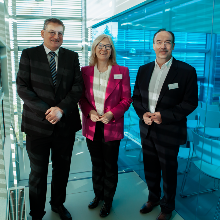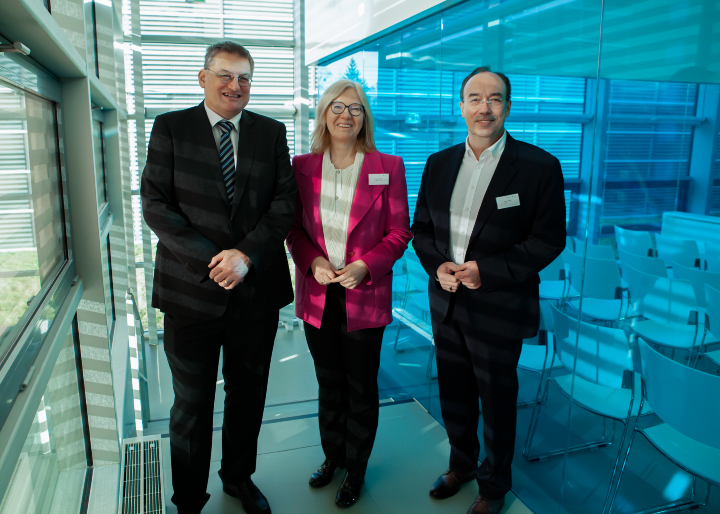The University of Stuttgart and Hewlett Packard Enterprise (HPE) have signed a contract for the installation of two new supercomputers at the High Performance Computing Center Stuttgart (HLRS). The Hunter and Herder systems will advance the HLRS and its user community up to the exascale level in two stages by 2027. This technological leap significantly expands high-performance computing capacities and enables new applications.
Continuing the University of Stuttgart's excellence strategy
The aim is to create new infrastructures for simulations, artificial intelligence (AI) and high-performance data analysis and to enable cutting-edge research in computational engineering and applied science. "The Hunter and Herder systems are a continuation of the university's excellence strategy, and high-performance computing forms the foundation for this. The expansion will strengthen Stuttgart's outstanding position in computer simulation and artificial intelligence research," explains Professor Wolfram Ressel, Rector at the University of Stuttgart.
Systems for computationally intensive processes
Exascale systems are capable of carrying out very computationally intensive processes at high speed. Their incredible performance capacity is based on graphics processing units, or GPUs. These graphics processors not only make it possible to process large amounts of data simultaneously, but also to carry out parallel calculations faster, more efficiently and much more sustainably. "Energy efficiency with optimal support for cutting-edge science is of paramount importance for us at the University of Stuttgart," emphasizes Anna Steiger, Chancellor at the University of Stuttgart. "With Hunter and Herder, we are responding to the challenges of reducing CO2 emissions, while also enabling both improved computing power and outstanding energy performance."
Developing innovative solutions for global challenges
Hunter" and "Herder" will not only benefit science, but also Baden-Württemberg's high-tech engineering landscape. Among other things, the two supercomputers are intended to advance the development of vehicles with lower fuel consumption, more productive wind turbines and new materials for electronics. They will also help us find new solutions for production and develop innovative approaches to enabling faster and more energy-efficient large-scale simulations. The systems will also support research into tackling global challenges such as climate change and provide resources for data analysis that could help authorities prepare for crisis situations.
Part of the national strategy of the Gauss Center for Supercomputing
"HPE has been a reliable partner since 2019 and together we are now planning to progress to the next performance level of ExaFLOP," explains Professor Michael Resch, Director of the HLRS. "With AMD's GPU 3 technology, we are ready to tackle the challenges of the future." The leap to Exascale is part of the national strategy of the Gauss Centre for Supercomputing (GCS) e.V. It is intended to advance the development of the three federal supercomputing centers (Jülich Supercomputing Centre, Leibniz Supercomputing Centre in Garching near Munich and HLRS in Stuttgart) that are part of the GCS. Together, "Hunter" and "Herder" will cost around 115 million euros. The Federal Ministry of Education and Research (BMBF) and the Ministry of Science, Research and the Arts, Baden-Württemberg each contribute 50 percent of the funding.



